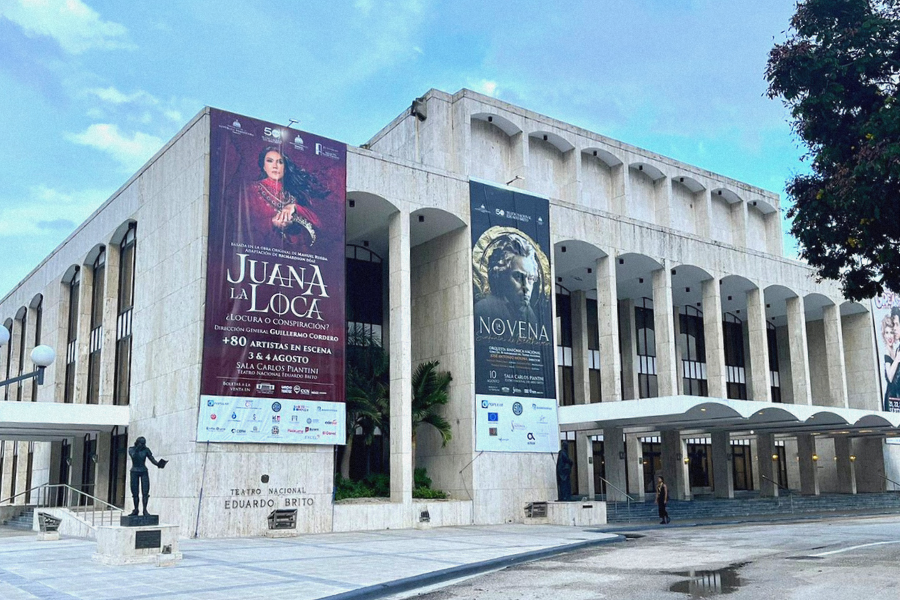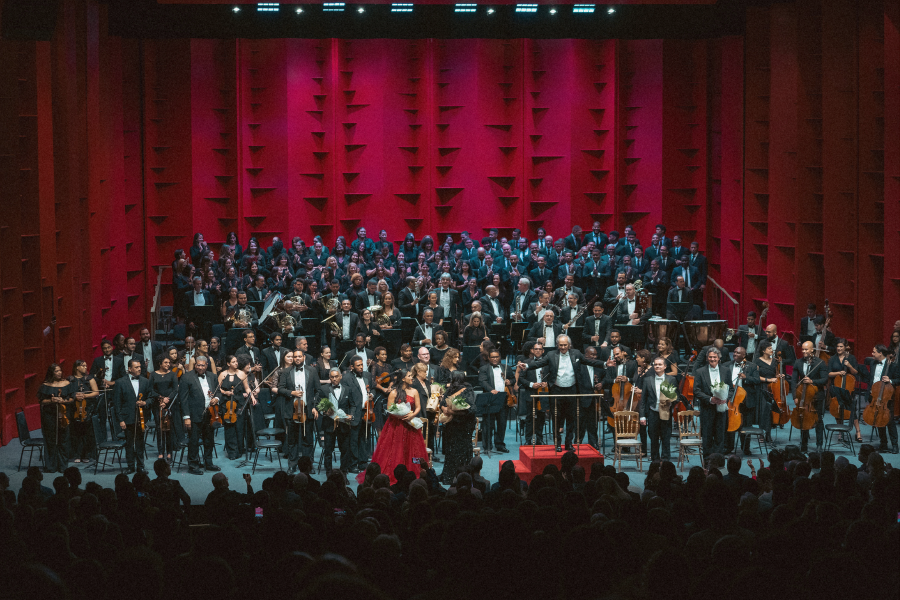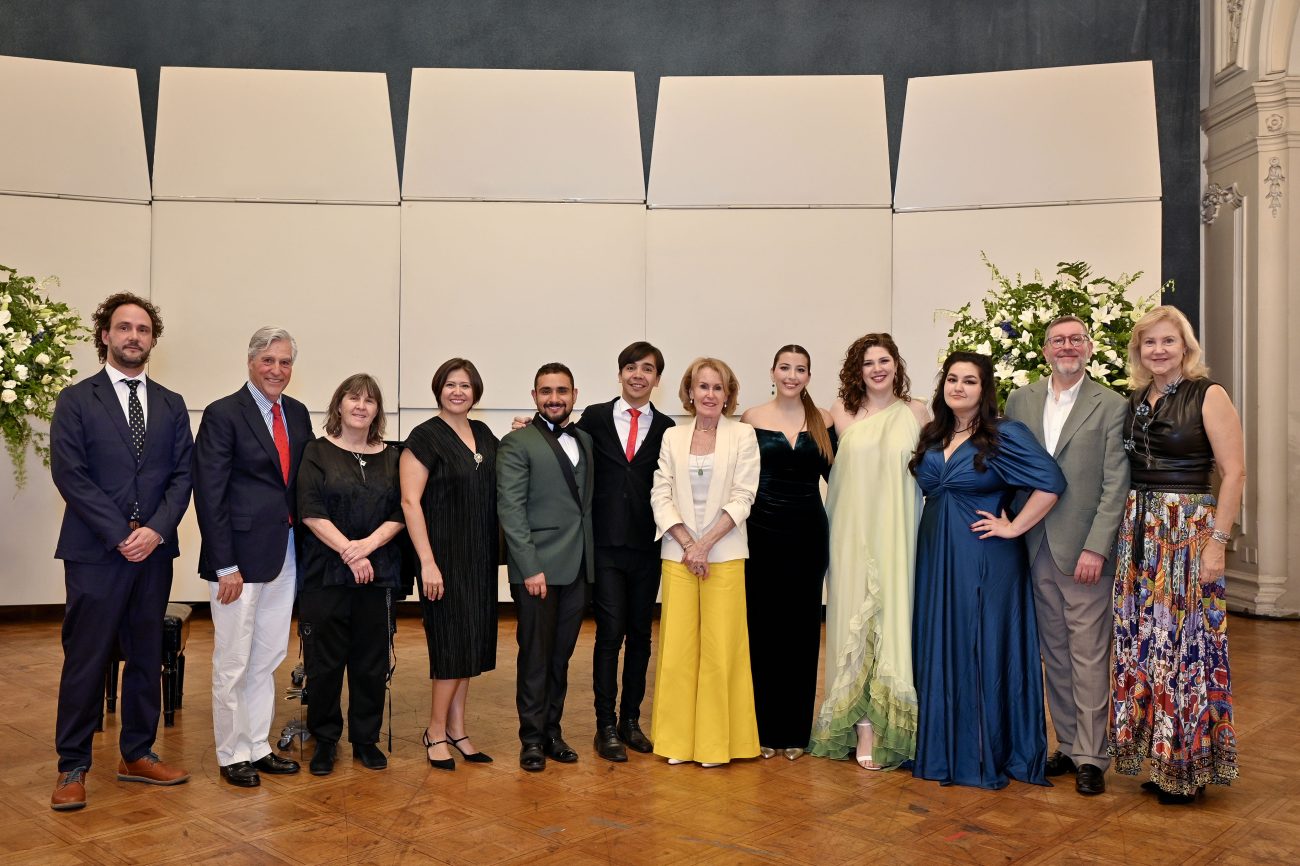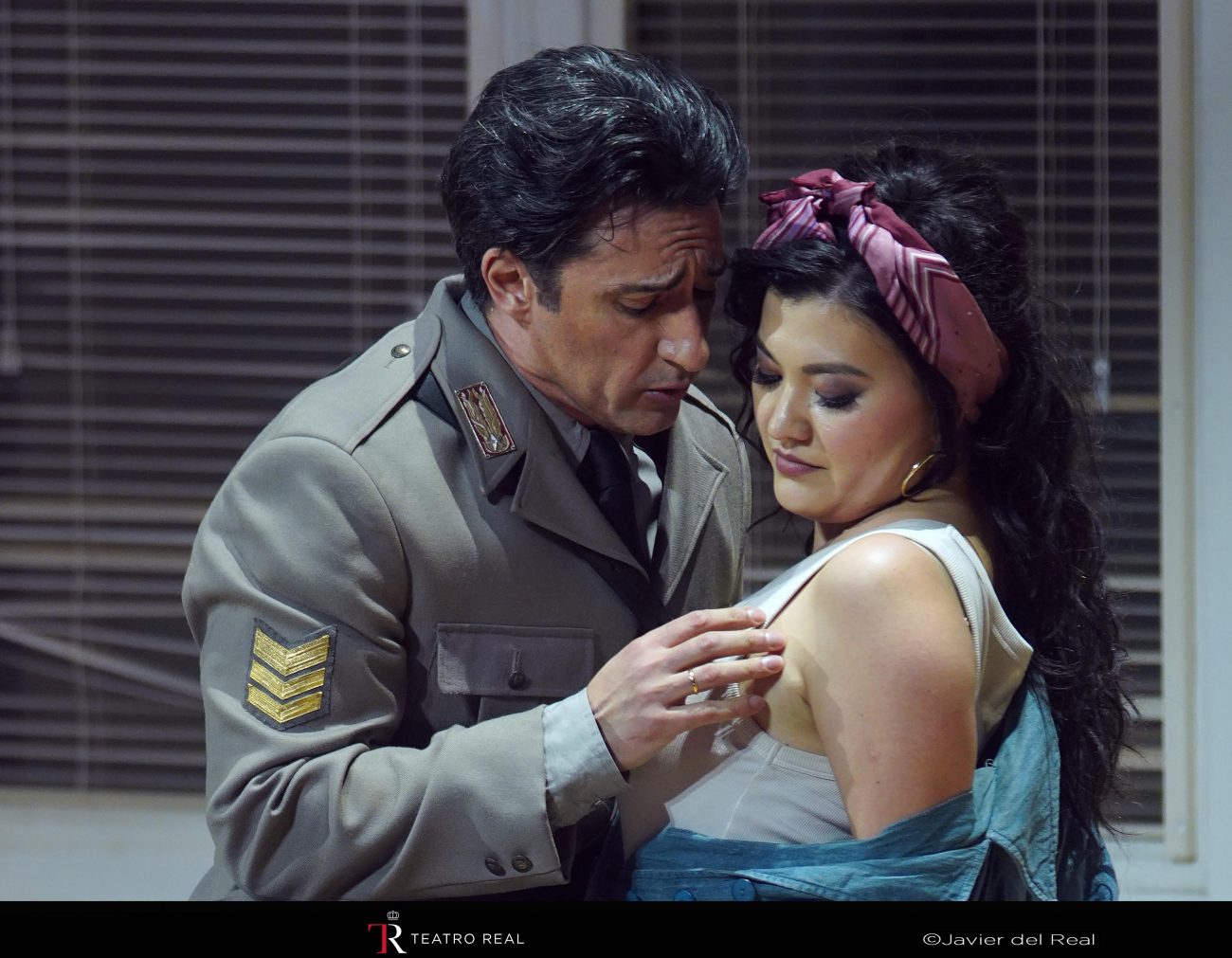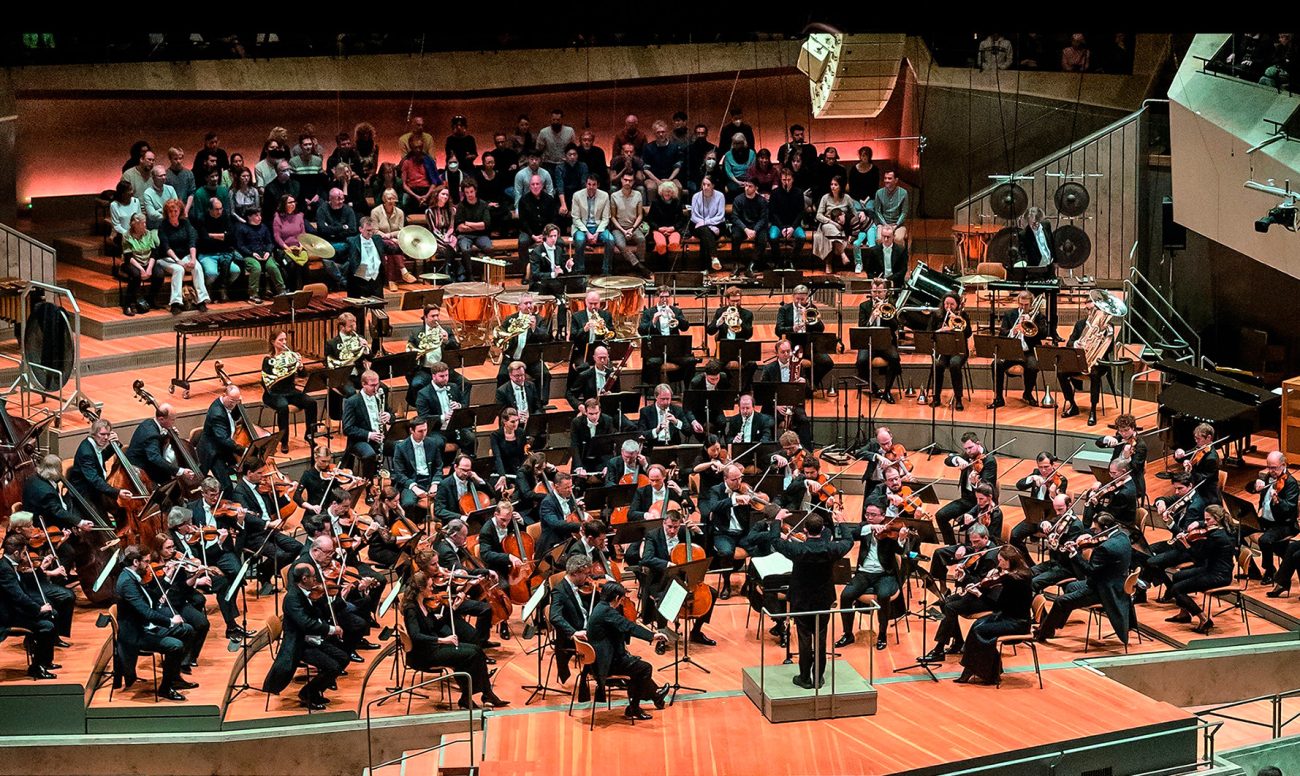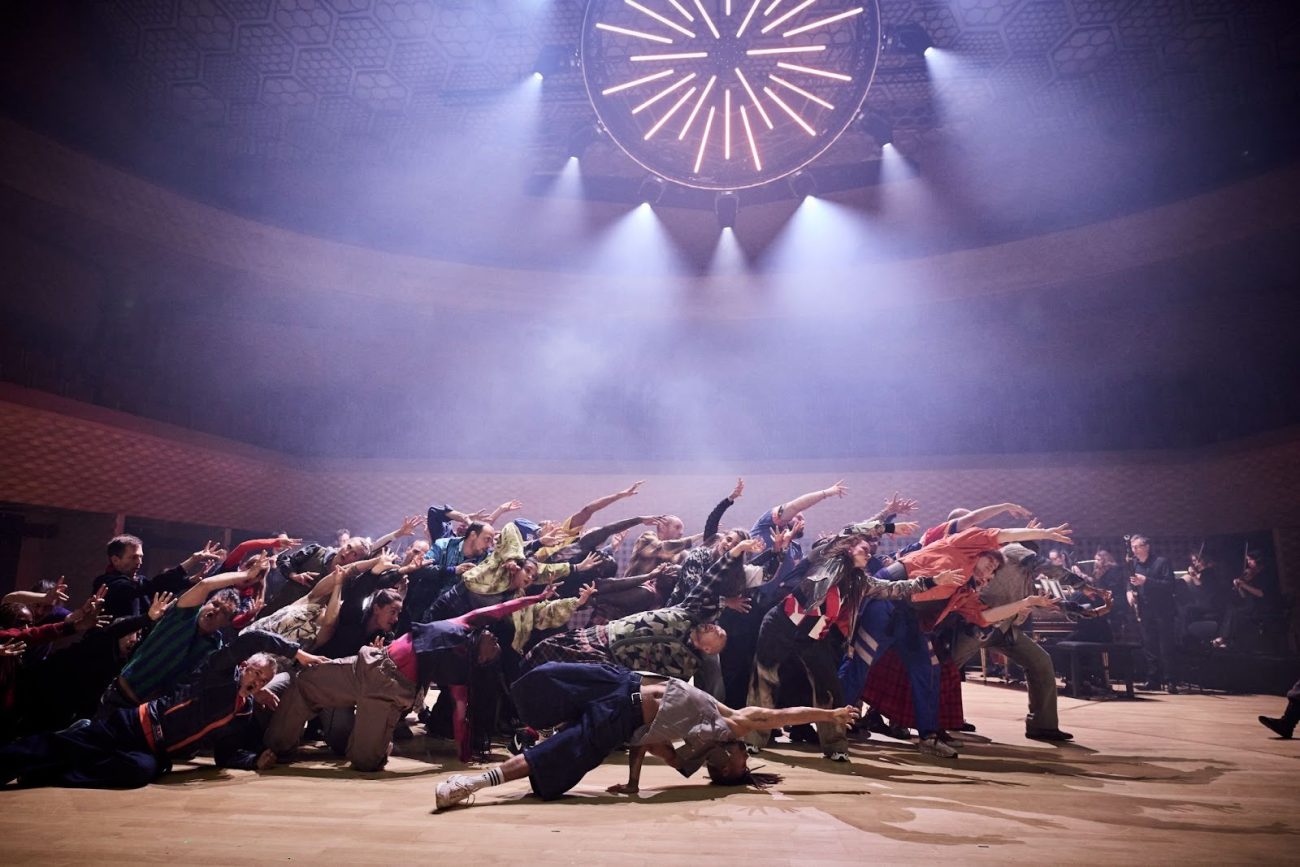OLA se acerca a la escena caribeña
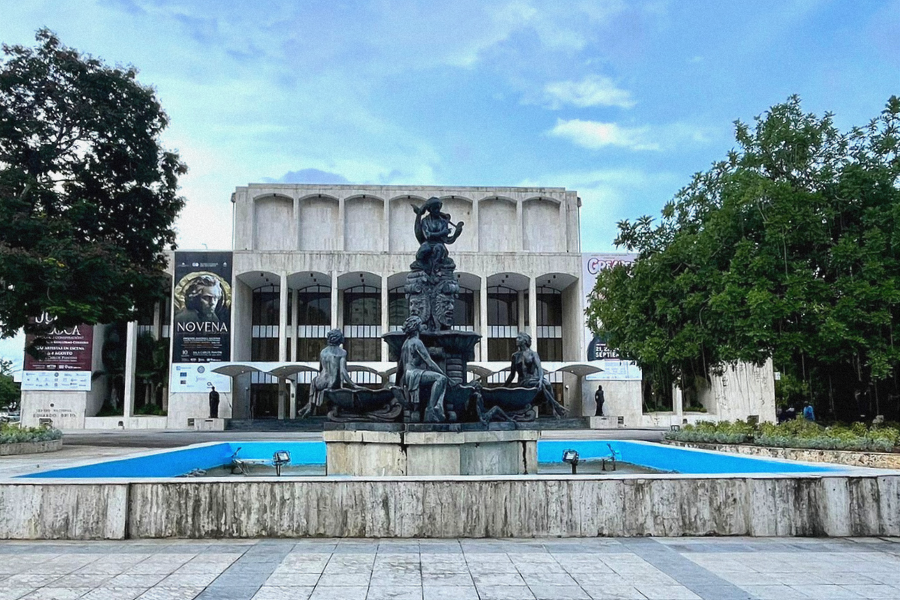
Tras una invitación de la Fundación Sinfonía, institución que desde 1986 trabaja por la promoción y difusión de la música sinfónica en República Dominicana, Ópera Latinoamérica asistió al 50° aniversario del Teatro Nacional Eduardo Brito. Esta ocasión marca uno de los primeros acercamientos de la red iberoamericana de teatros a la zona del Caribe, donde se mezcla la programación tanto de creaciones propias y locales como de alquileres de grandes producciones internacionales.
Recorrer Santo Domingo, visitar su icónico Teatro Nacional Eduardo Brito y sorprenderse con las influencias en su arquitectura, que van desde el Teatre Principal de Palma hasta el Metropolitan Opera House. Conocer a una familia que, desde la filantropía, ha impulsado el desarrollo de la escena artística local y, por otro lado, el funcionamiento de la Dirección General de Bellas Artes (DGBA) del Ministerio de Culturas, que cuenta con diez elencos estables. Por primera vez en su historia, Ópera Latinoamérica (OLA) se adentró en República Dominicana y conoció, de primera fuente, la gestión de los teatros más simbólicos de la isla.
Invitada por la Fundación Sinfonía, la directora ejecutiva de OLA, Alejandra Martí, asistió a la celebración de los cincuenta años de historia del Teatro Nacional, ocasión en la que se programó la Novena Sinfonía de Beethoven interpretada por la Orquesta Sinfónica Nacional junto a un coro de más de 100 voces conformado especialmente para esta ocasión. “República Dominicana tiene una escena musical y lírica joven y de gran potencial. En el Teatro Nacional se han presentado óperas porque cuenta con la infraestructura para ello y el país cuenta con gran diversidad de cuerpos artísticos. Además, es muy valioso que exista una entidad como Sinfonía que, desde el mundo privado, también ha aportado al desarrollo de las artes clásicas dominicanas. Son entidades que trabajan en colaborativamente y que podrían perfectamente ampliar sus redes nacional e internacionalmente para seguir creciendo”, comenta Alejandra Martí.
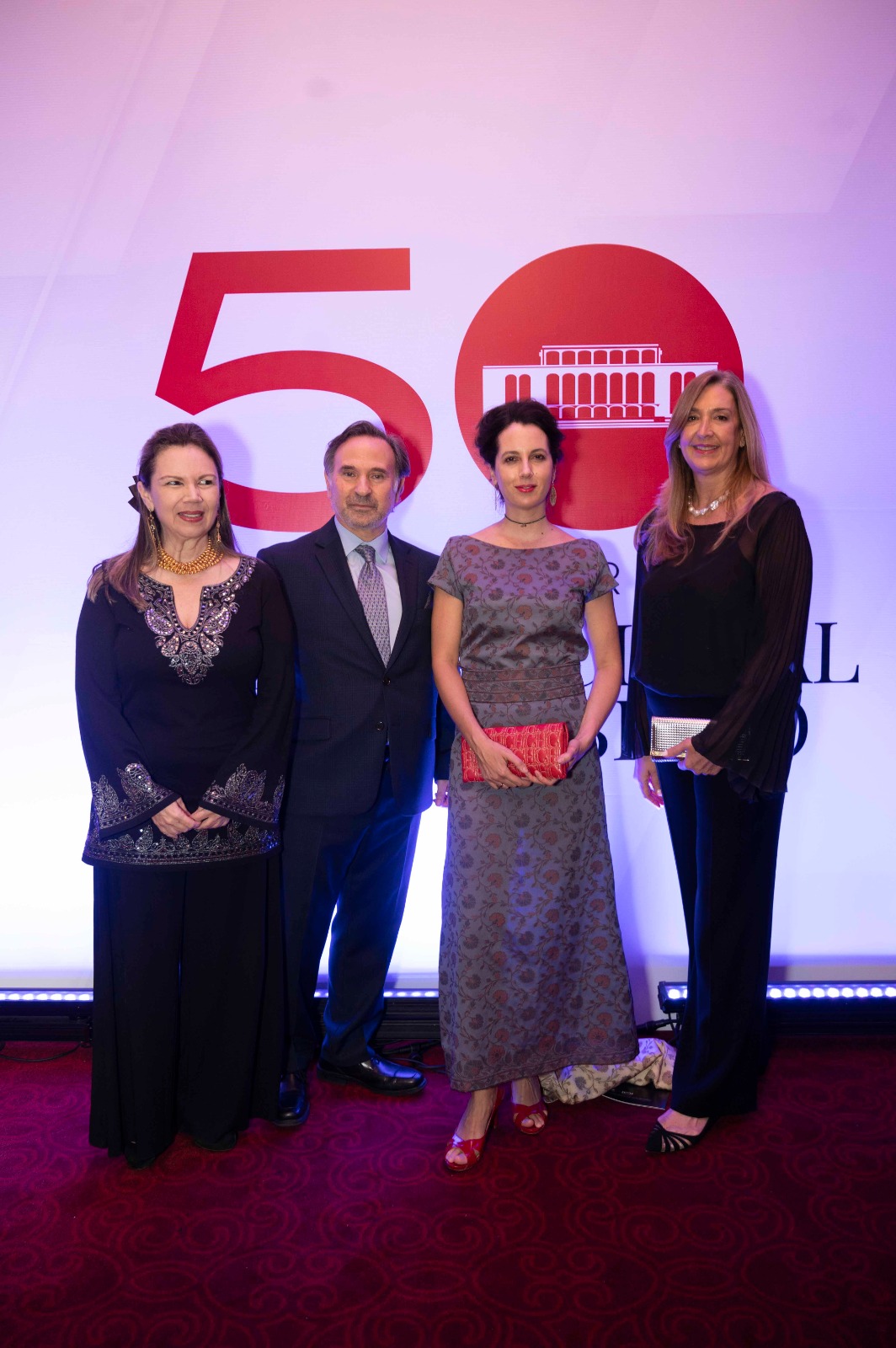
Margarita Miranda de Mitrov, directora de Fundación Sinfonía; Carlos Veitía, director del Teatro Nacional Eduardo Brito; Alejandra Martí, directora ejecutiva de Ópera Latinoamérica; y Marisol Rodríguez Copello, de Fundación Sinfonía.
Fundada en 1986 por Pedro Rodríguez Villacañas y Margarita Copello de Rodríguez, en un principio Fundación Sinfonía tuvo el objetivo de rescatar la Orquesta Sinfónica Nacional de la República Dominicana, cuerpo que dirigió hasta 2002, año en que la gestión fue traspasada al nuevo Ministerio de Cultura. Actualmente, la fundación está dirigida por Margarita Miranda de Mitrov y se dedica a la promoción y difusión de la música docta en República Dominicana, a través de diversas iniciativas: la organización de conciertos, festivales –entre ellos, el Festival Musical de Santo Domingo– y actividades de mediación y apreciación musical, además de la creación de la Joven Filarmónica de la República Dominicana con el apoyo de YOA-Orquesta de las Américas y la Fundación Batuta de Colombia.
El Teatro Nacional Eduardo Brito
En el número 35 de la Avenida Máximo Gómez, plena Plaza de la Cultura de Santo Domingo, se alza el Teatro Nacional Eduardo Brito, un edificio que, a primera vista, llama la atención por sus evocaciones a la arquitectura de la Metropolitan Opera House, con sus arcos y columnas de estilo modernista. La similitud no es casualidad; en 1970, el entonces Presidente de la República Dominicana, Joaquín Balaguer, le encargó al arquitecto Teófilo Carbonell la construcción de un teatro que albergara los más grandes espectáculos artísticos.
Carbonell tomó sus notas y salió a recorrer los coliseos más emblemáticos de Europa y América, y completó sus expectativas con las mejores salas de Estados Unidos. Así, después de tres años de construcción, en 1973 se inauguró el Teatro Nacional Santo Domingo que posteriormente, en 2006, fue rebautizado con el nombre de Eduardo Brito en honor al emblemático barítono dominicano.
Dependiente de la Dirección General de Bellas Artes (DGBA) del Ministerio de Cultura, el Teatro Nacional Eduardo Brito cuenta con tres salas y un bar que lleva el nombre de Juan Lockward, cantante, compositor y bohemio conocido como «El Mago de la Media Voz». En sus salas se presentan espectáculos de cuerpos estables –también dependientes de la DGBA– como la Compañía Lírica Nacional, el Ballet Nacional Dominicano, el Ballet Folclórico, la Compañía Nacional de Danza Contemporánea y la Compañía Nacional de Teatro, entre otros.
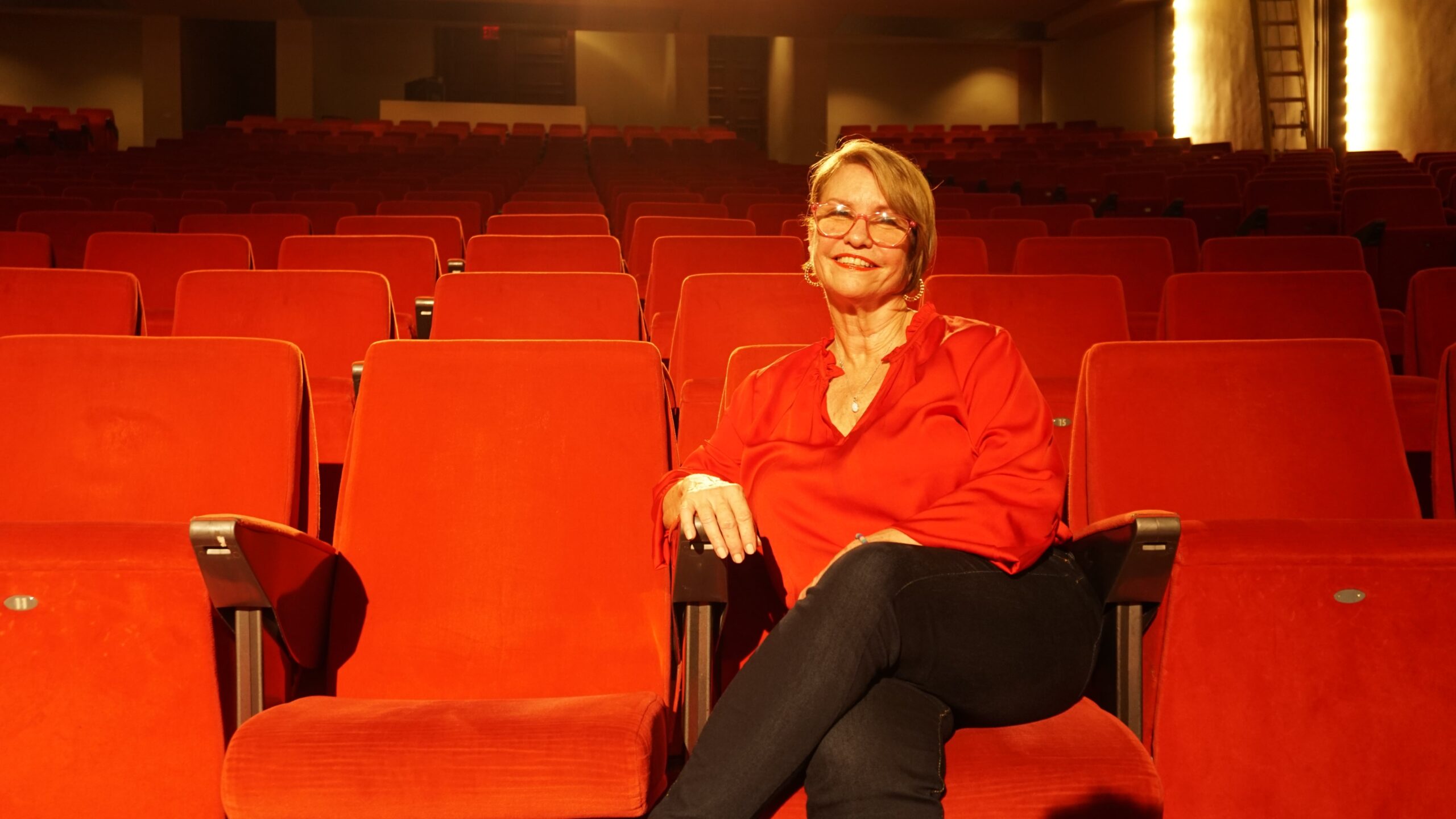
Marianella Sallent, directora de la Dirección General de Bellas Artes de República Dominicana. Foto: Cortesía DGBA
“República Dominicana ha disfrutado en estos últimos 2 años de representaciones de musicales como Mariposas de Acero, sobre la vida de las Hermanas Mirabal, mártires de la tiranía Trujillista, merecedora de las mejores críticas y Juana la Loca, Locura o Conspiración, con una adaptación brillante de la obra teatral escrita por el reconocido Manuel Rueda. Una producción de alta calidad a nivel mundial. Además de constantes temporadas de teatro, música y danza donde se exhiben lo mejor de las artes escénicas del país”, señala Marianella Sallent, directora de la DGBA.
“El Teatro Nacional siempre ha sido más que nada un un venue para alquilar grandes producciones y la dirección general y artística del teatro se ha ocupado siempre de velar que la programación tenga nivel y sea profesional”, cuenta Carlos Veitía, director del espacio. Este año, por ejemplo, se realizó el Festival Nacional de Ballet y una producción de la obra de teatro Juana la loca, del autor dominicano Manuel Rueda.
Tierra de «talento, color y ritmo»
“La ópera en República Dominicana ha sido intermitente”, señala Carlos Veitía. “Este año pasado teníamos en agenda programar Tosca, de Giacomo Puccini, pero no pudimos por una serie de factores y tuvimos que reinventarnos”.
Fidel López, productor de la compañía Ópera RD, concuerda con Veitía: “La ópera ha tenido un proceso muy lento en la República Dominicana. Hace unos años, en el 2014, se montó la ópera La Bohème, una producción completa que estuvo a cargo de Ópera RD. Recién en 2019 pudimos volver a hacer ópera con la misma compañía, en este caso, La Traviata, dirigida por José Antonio Molina con la participación de la Orquesta Sinfónica Nacional”, comenta el también escenógrafo.
“La República Dominicana a pesar de ser considerado un país pequeño es, sin embargo, el origen de grandes músicos mundiales a la altura de Juan Luís Guerra o Michel Camilo, así como en la danza donde sus exponentes han encontrado representaciones en países como España, Rumanía, Estados Unidos”, comenta Marianella Sallent, a lo que agrega que “es una tierra de mucho talento, de mucho color, de mucho ritmo, las representaciones escénicas alcanzan altos niveles de excelencia”.
Para encontrar nombres de la música docta y la lírica en República Dominica se debe mirar, sobre todo, a los siglos XX y XXI. En estos periodos aparecen compositores clave como José de Jesús Ravelo (1876 – 1951), quien escribió el oratorio La muerte de Cristo y otras obras que mezclaban la orientación religiosa con el eclecticismo modernista. También destacan los nombres de Luis Mena (1895 – 1964) o Rafael Ignacio (1897 – 1984), quienes incluyeron corrientes del folclorismo y nacionalismo en sus composiciones para orquesta.
“Creo que es de gran importancia para nosotros poder vincularnos a OLA porque necesitamos de ese tipo de apoyo y unión para actualizarnos, crear programas de público y agigantar un poco más la escena de la música, en especial de la ópera, en República Dominicana”, cierra Fidel López.


